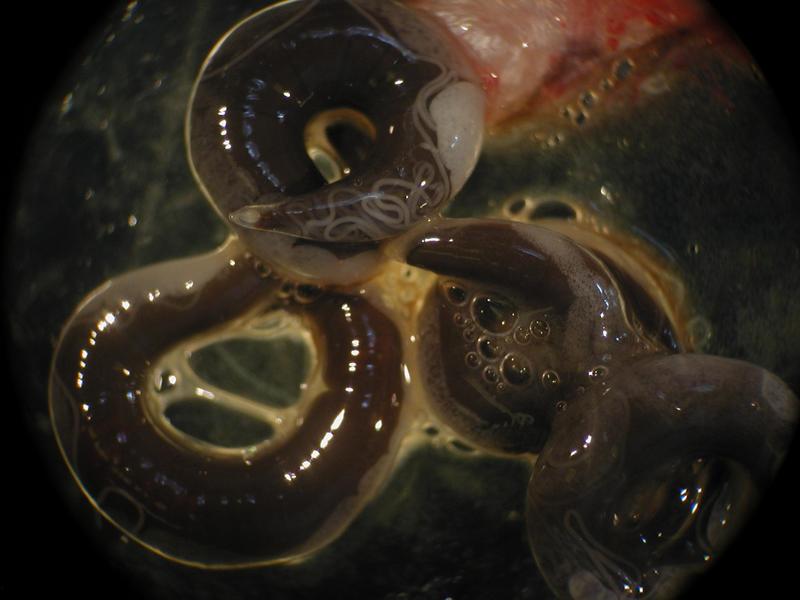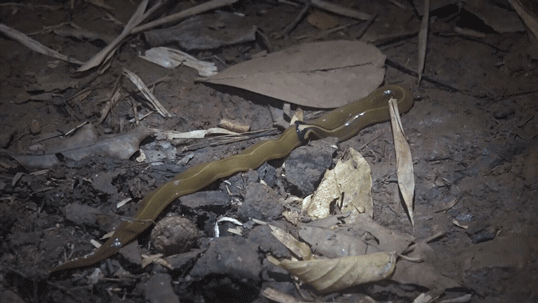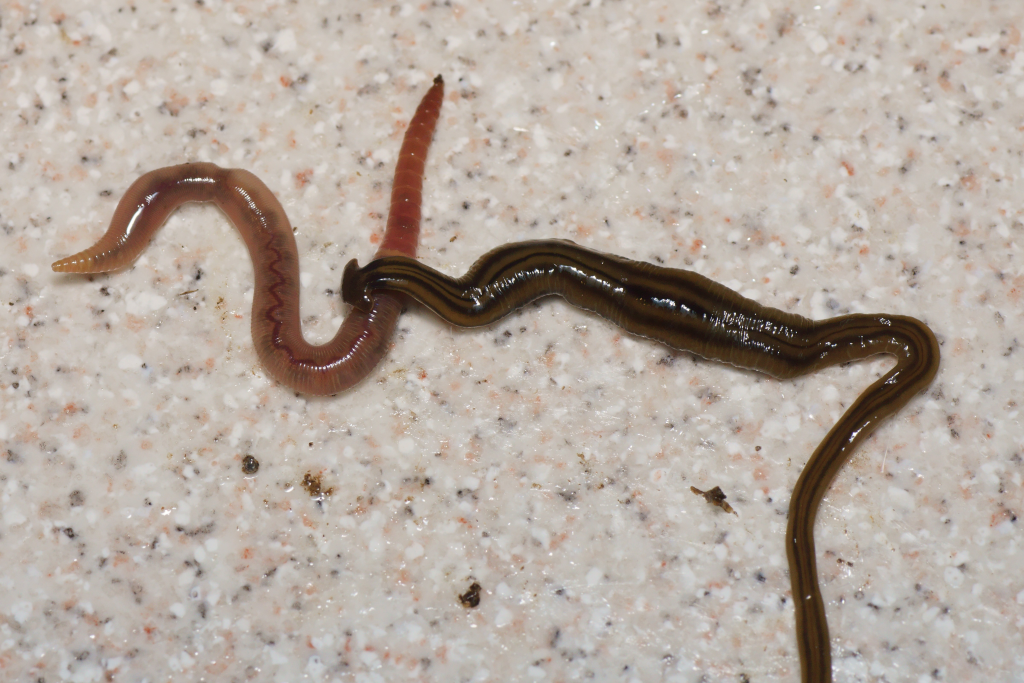
As humanity becomes increasingly interconnected across the globe, the unintentional spread of non-native species into vulnerable habitats is creating a growing crisis. Wherever they go, invasive species have the potential to wreak havoc on ecosystems and economies alike, occasionally swelling to scourge status in the absence of native predators or meaningful restrictions on their reproduction.
The global “most wanted” list is filled with plenty of well-known examples. In Australia, poisonous cane toads introduced from South America have killed off native predators who try to eat them. Mongooses have eaten untold numbers of Hawaii’s native forest birds — and before that, nearly wiped out various species on the Caribbean islands where they were introduced. And Burmese pythons have devoured much of Florida’s wildlife.
But there are a number of unusual invasive species that largely go unseen. Some of these invasive species are weirder than the standard snake or toad, and they generate chaos in some exceptionally unsettling ways.
Soil Assassins
If you live in the United States or Europe, there may be aliens slithering beneath your feet. Well, in the dirt, at least. Take a garden trowel to the earth below and you might just pull up a hammerhead worm (Bipalium).

Scooting through the soil and leaf litter like slick, gummy ribbons, these creatures are a far cry from any earthworm, and they certainly look it. They are flatworms, more closely related to tapeworms than to nightcrawlers. They get their name from their fan-shaped “headplate”, and while many are only about the size and shape of a fettuccine noodle, some giants can be as long as your arm.
Hammerhead worms can be visually striking—adorned in bright colors and stripes—and their behavior is every bit as bold. These flatworms are predators, sniffing out invertebrates in the soil and dispatching them with sticky secretions and poisons. One species, Bipalium kewense, produces tetrodotoxin, the same deadly compound used by pufferfish and blue-ringed octopus. It’s one of the only terrestrial animals to do so.
Once captured, prey is then dissolved on the spot when the hammerhead worm pushes part of its digestive system out of its mouth (spilling digestive enzymes on the victim) and slurps up the liquefied remains. Lovely.

All this is well and good in the worms’ native range, but some species (including B. kewense) have spread from Southeast Asia to more northern latitudes, where they are hunting and eating native earthworms. Given the crucial role earthworms have in aerating and mixing soil, any threat to their abundance is a grim development for entire native ecosystems.
Even in their native habitats, few animals dare eat hammerhead worms due to their toxic, acrid secretions, so there are little to no natural checks on their invasive populations.
Prime Slime
Quiz time! What’s the size of a grapefruit, covered in runny mucus, and eats everything it touches? If you guessed “giant East African snail”, then you’re correct!
Meet Lissachatina fulica, one of the largest land-lubbing snails on the planet. These ginoromous gastropods are—as their common name suggests—native to East African forests. They can fairly easily surpass eight inches in length, which is big enough to envelop an adult human’s hand, making Lissachatina fulica look like escargot that’s been modified for US portion sizes.
While there are several other very large snail species (also in Africa), the giant East African snail has a uniquely notorious reputation as a global invader.
As anyone who gardens can attest, snails and slugs are the bane of any green thumb, especially when big, leafy greens are involved. Most snails are voracious herbivores with very flexible palates, and the giant East African snail is no different, with an appetite to match its girth. These slimy bottomless pits won’t stop when their favorite veggies can’t be found. They’ll munch on just about anything they can find that can’t run away. That includes tree bark, by the way. And stucco on houses. Even other giant snails, if desperate.
So the species is of dire concern for agriculture in the warm regions it has infiltrated, which includes China, India, Southeast Asia, the Caribbean, and parts of the US (Florida, Hawaii, and possibly Texas).
But the impact doesn’t stop there: these monstrous mollusks are also slow-motion dirty bombs, carrying many types of plant diseases and animal parasites. They can facilitate the spread of black pod disease in cacao plants, caused by a fungal pathogen spread through their feces. The snails also can be infected with rat lungworm, a parasite that infects rats, but uses land snails as an intermediate host in the worm’s larval stage. If rat lungworm—spread by giant snails—finds its way into humans (not a targeted host), it can get “lost” in the central nervous system, causing a very serious form of meningitis that often results in either brain damage or death.
Even in death, giant snails are a blight in invaded landscapes. In places where they reach huge numbers, their piles of shells breaking down in the soil can neutralize the surrounding pH, completely changing what plants can grow in these snail cemeteries.
Island-Eating Ants
If you live in the southern U.S., you’ve likely heard of the growing nuisance of fire ants, or even had first-hand experience with their painful stings. Invasive ants are a problem all over the world, and there are now many species involved—yellow crazy ants, Argentine ants, and big-headed ants as some of the most prominent examples. But on Pacific islands, electric ants (Wasmannia auropunctata) are Public Enemy #1.

Electric ants are very small—only about a millimeter long—and honey-colored. But they pack a wallop, sporting a nasty sting for such a tiny insect. Because the sting’s pain can be intense and the surprisingly large welts left behind can last for a long time, electric ants are also called “little fire ants.” The ants were native to Central and South America, but have now invaded many isolated island groups in the Pacific Basin, along with parts of Africa, the southern U.S., the Caribbean, and Australia.
Where they establish colonies, electric ants slaughter native insects, including other ant species. This is pretty standard among other invasive ants, but electric ants also have bigger targets: native island vertebrates. With their powerful sting and great numbers, electric ants can overwhelm comparatively massive animals.
In the Galapagos Islands, the endemic giant tortoises are especially at risk. The ants mob and consume tortoise hatchlings, and will attack the eyes of adult tortoises. In Hawaii, where electric ants are growing in number, the aggressive stinging of these almost imperceptibly teeny ants is thought to be behind a rise in blindness among pets.
A Sinking F’eeling
For the parasitic swimbladder worm (Anguillicoloides crassus), life is a series of hitchhiking episodes. These nematodes start out as larvae sitting on the surface of an aquatic plant or rock. Soon, they are eaten by a small crustacean or other invertebrate, and inside the gut of their intermediate host, the worm reaches its mature, infective stage.
Once its chauffeur is gulped down by an eel, the worm gets its chance to shine, traveling from the eel’s digestive tract to its swimbladder, where it can reproduce and deposit its eggs, which are then passed by the eel into the water, completing the cycle.

This neat little loop occurs in its native home of East Asia, where the parasite uses the Japanese eel as its host. But swimbladder worms were inadvertently introduced to Europe a few decades ago, where they’ve adapted to infect European eels. While many eels (in both Asia and Europe) with swimbladder worm infections can handle the parasites well enough, heavy infestations can be a big problem.
Swimbladders allow bony fish to control their buoyancy while swimming, and a swimbladder packed full of nematodes can have significantly less gas than normal, and can even totally collapse. Eels with such severe infections can’t swim efficiently and are constantly fighting sinking—a struggle that may interfere with the species’ ability to reach seasonal spawning grounds at sea.
The invasion of swimbladder worms to Europe has also been blamed for occasional dips in yields in both farmed and wild-fished eels.
Invasive species are almost troublesome by definition. But perhaps we can be thankful that not all destructive aliens are quite as unsettling as boomerang-headed poison pasta, or an ant that likes to stab venom into the eyes of its enemies.




